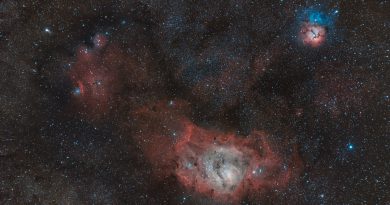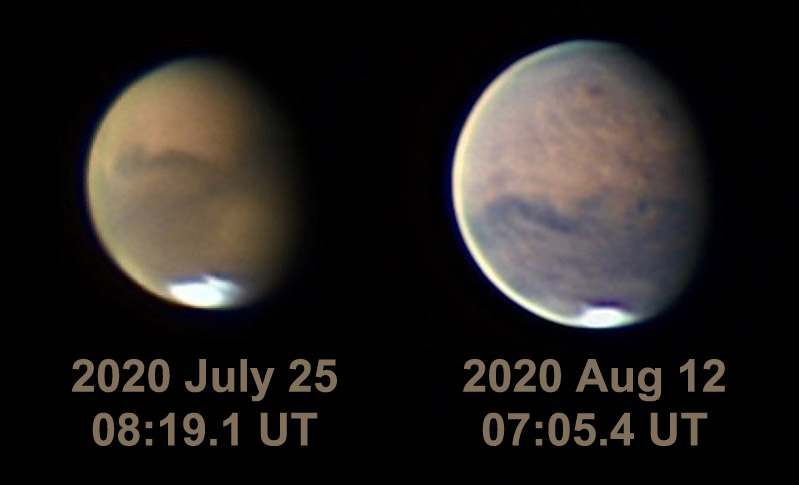Szabolcs Nagy: Powermate™ User Profile
For most people an overhead pass of the International Space Station (ISS) looks somewhat like a bright airliner crossing the sky. Not for Szabolcs Nagy: with his 1,200mm Dobsonian scope and 2.5x Tele Vue Powermate™ he can get up-close video of this bright streak that resolves into individual solar panels, modules, and even docked capsules!
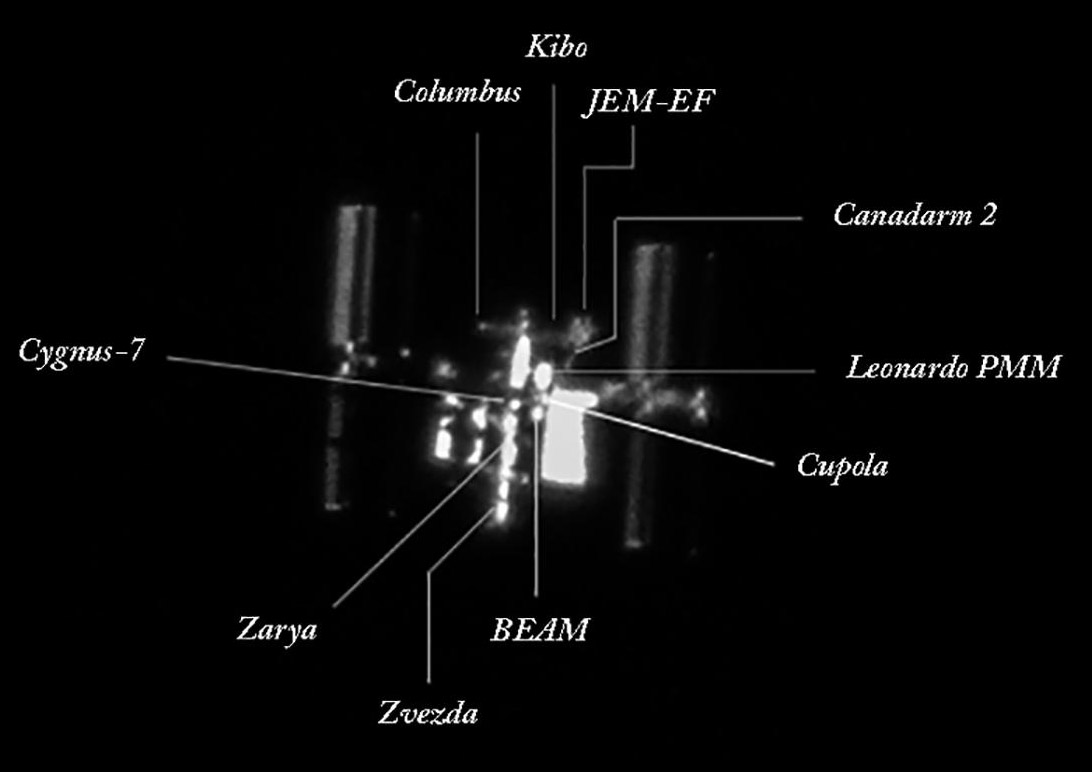

We noticed these amazing, awe-inspiring, close-up photos of the International Space Station (ISS) made with our Tele Vue 2.5x Powermate™ on social media. They showed an amazing amount of detail for an object 250-miles / 400-km away with a maximum dimension of only 356-ft / 108.5-meters. Some of these images are annotated with the location of the hardware that made up the ISS. Including the relatively small supply capsules and Canadarm2 remote manipulator. We eventually realized all the images were made by the same person: Szabolcs Nagy from London.
So we contacted Szabolcs and asked him to tell us how he got into this hobby and a little about his imaging technique.
Szabolcs tells us he moved to London 9-years ago from Hungary and works as a minicab driver in the city. “This job gives me the necessary flexibility that my hobby requires.” He does his astro-imaging either from a ground-floor balcony or the nearby park. He’ll travel some distance to image if the ISS is predicted to transit the Sun, Moon, or a planetary body and the forecast is 50% clear or better. “One requires wizard-like skills to predict weather in and around London :)”, relates Szabolcs.
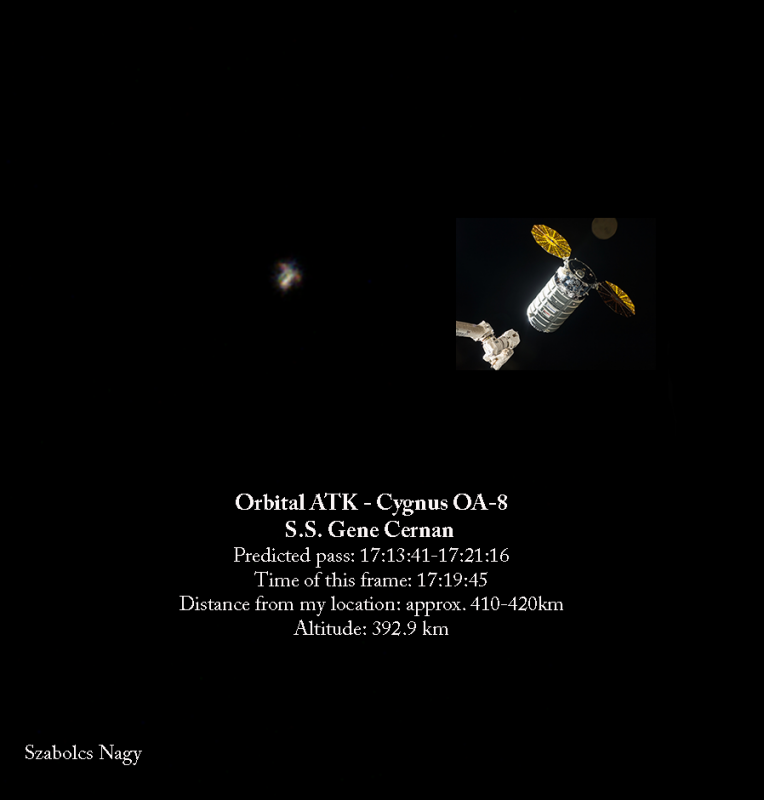
In my opinion, the BBC is one of the best – if not the best – television channel in the world when it comes to science and education. Professor Brian Cox is an inspirational scientist and his “Wonders of …” series tuned my attention toward astronomy for the first time in my life. When his “Stargazing Live” series came out and I saw a live video feed of Jupiter, I promised to myself to buy a telescope. I really wanted to look at it live. To observe and experience yourself these amazing wonders of our Universe is simply priceless and will transform the way you are going to look at the night sky forever. The best single decision I made in my life is to purchase a telescope.
London’s light pollution is just terrible, so it pushed me toward a certain direction to take photos. So I choose targets which aren’t hugely affected by light pollution: planets, Moon, Sun and man-made objects are my focus of interest. In particular, ISS is the target I really enjoy taking photos of. I’ve done it with several equipment setups like an equatorial mounted 8″ Newtonian, small Maksutovs on both equatorial and altazimuth mounts, and now I’m using the best type of scope for this purpose: a 10″ Dobsonian.
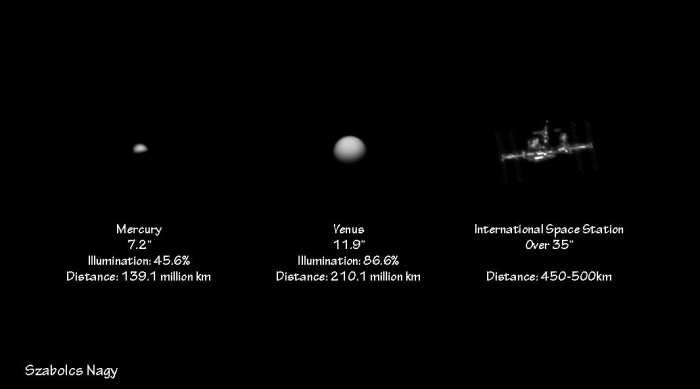
But the scope itself was the first baby step. Soon I’ve realized the need for excellent accessories too. You can have the best scope in the world, but have poor results if the small accessories don’t deliver on the potential of your equipment. After trying out a few Barlow lenses to increase magnification, I found Tele Vue and their brilliant Powermate™ line. Looking back now – one of my best investments was my 2.5x Powermate™ from Tele Vue. I have a 2x Barlow lens as well, but the Powermate™ is my go-to amplifier whatever I’m about to photograph the planets, airplanes, or the ISS. It simply delivers quality photos without distortion or chromatic aberration. The 10″ Dobsonian, a mono ASI 120MM camera, and the amazing Tele Vue 2.5x Powermate™ are the equipment for the purpose. Of course there is always room for improvement: that’s what astronomy photography is about, tiny improvements here and there.
In the absence of a motorized mount capable of following the rapid movement of the ISS, I do my tracking manually. Not an easy task for sure, but like many things in life, with a little practice it is readily doable. At the beginning I used my right-angle finderscope to follow ISS, but the upside-down view drove me crazy: I Just couldn’t force my brain to get used to it. Then I discovered the Telrad (similar to a red dot finder), a very simple tool which made my life so much easier. No magnification though, but looking through the concentric circles is very helpful to keep ISS in my field of view.
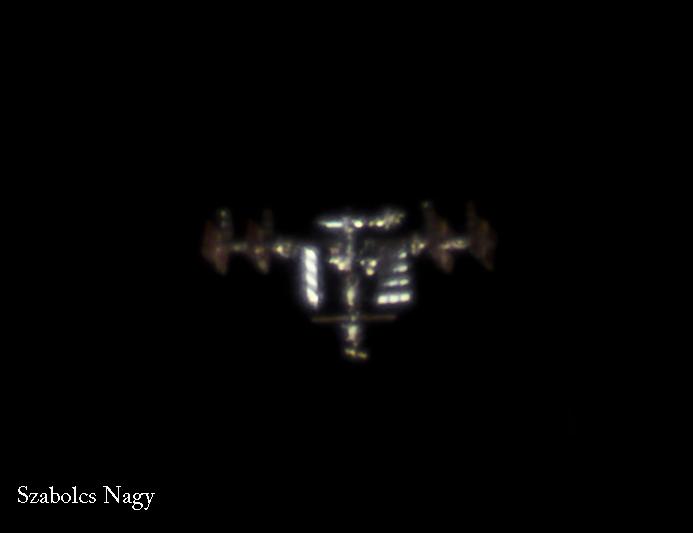
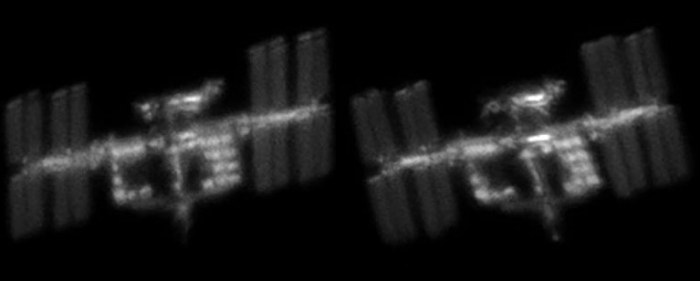
This photo will be a memorable one, because Randy Bresnik and Mark Vande Hei were just about to finish their successful space walk whilst I was taking photos of the ISS :). After the pass and a quick check of the video for possible good frames, I took my time showing Saturn, Albireo and the near full Moon to my neighbour. After I packed away the equipment, I saw them taking off their spacesuits on live video stream from station. It felt like I was part of a small success (:D).

I’ve missed Uranus’ opposition (19th October), but it got only 1.7 million km farther away since then :). This also was a test of the ASI224MC camera and I pretty much liked the end result. I sold my color planetary camera about a year earlier, replaced it with a ASI120MM mono which does a better job in terms of details, but lack of color took my enthusiasm from planetary imaging. This photo reactivated my passion.
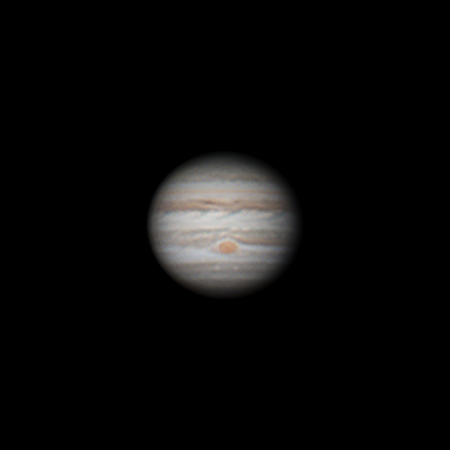
We congratulate Szabolcs on his imaging success and wish him clear skies for his future astro-imaging attempts.
- Szabolcs’ flickr stream
- Szabolcs’ twitter stream
- Szabolcs’ Instagram stream
- Szabolcs’ Facebook stream
- Spot the International Space Station NASA webpage
- Heavens-Above has a graphic globe with the current position of the ISS marked. You can also generate a list of ISS passes if you enter your observing location.
- Szabolcs’ YouTube Tutorial on imaging ISS & airplanes
- Tele Vue Powermate™ Gallery on flickr
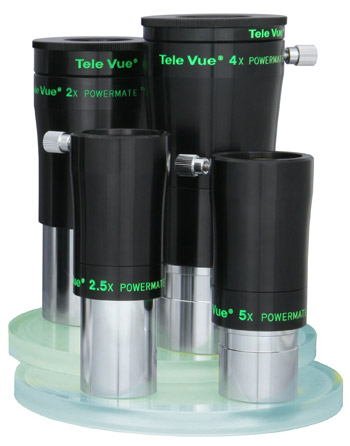
To increase the power of your favorite eyepiece, or for serious planetary / solar imaging though your scope, consider our Powermate™ amplifiers (mobile site). They increase the focal length of your scope with freedom from aberrations, greater magnification potential, and compact size.
Most any commonly available DSLR, astro-camera, and even some industrial cameras will work with Powermates™. Cameras just need a slip-in 1¼” or 2” nosepiece or T-Ring for attachment with the optional Powermate™ T-Ring adapter . Powermate™ can be stacked with no adverse impact.
Tele Vue Powermates™ are available in 2″ barrels (2x & 4x) and 1¼” barrels (2.5x & 5x). The visual tops all unscrew to accept a specific Tele Vue Powermate™ T-Ring Adapter for cameras and T-thread accessories.







